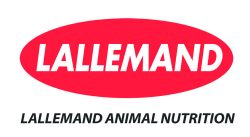This item has been supplied by a forage marketer and has not been edited, verified or endorsed by Hay & Forage Grower.
The saying “the best defense is a good offense” holds true even for livestock producers. Preventing losses in production and reducing treatment costs is a winning strategy, says Angel Aguilar Ph.D., Dipl. ACAN, Technical Service Manager, Lallemand Animal Nutrition.
“We know one of the most important pillars for production and profitability is ensuring each animal has a good nutritional status,” Dr. Aguilar says. “This sets the stage for everything — from vaccinations to breeding programs — to work correctly.”After getting the fundamentals right, producers can make their rations work even harder by adding proven probiotics and prebiotics for additional gains in health and productivity.
Both probiotics and prebiotics work by modulating the balance and activities of the gastrointestinal microbiota.1 The microbiota is a complex mixture of naturally occurring microorganisms in the animal’s gut that includes bacteria, protozoa and fungi. In modern livestock production, many challenges to growth and nutrition are caused by disruption of the intestinal environment.
“The intestinal tract is actually responsible for about 60 percent of the total immune system,” Dr. Aguilar says. “The gut sends signals to the rest of the body that promote antibody production. This systemic activity fuels a reaction, which can help fight stress or against disease challenges.”
Probiotics
Probiotics can impact digestion or balance the intestinal microbiota by favoring beneficial microbes.2 Probiotics can be either bacteria or yeast and must usually be alive when consumed to be effective. The results are entirely strain specific and can vary even between different strains in the same species of yeast, Dr. Aguilar notes.
For example, one strain of yeast — Saccharomyces cerevisiae boulardii CNCM I-1079 — has been shown to stimulate beneficial microflora, enhance lower gut health and positively interact with the immune system of cattle. Whereas another strain, S. cerevisiae CNCM I-1077, has been shown to improve the ruminal pH pattern in cattle.3,4
A bacterial probiotic, Lactobacillus acidophilus BT-1386, has been shown to improve average daily gain (ADG) in cattle and minimize the ability for pathogenic bacteria, like E. coli O157:H7, to develop.6
Prebiotics
Probiotics and prebiotics can be used together. Prebiotics are non-viable microbial fractions. These products generally work by promoting the growth and activity of beneficial bacterial in the gut.
For example, the yeast cell wall of S. cerevisiae can be isolated and used in livestock feeds. A specific strain of the yeast and its cell wall contain high levels of mannan oligosaccharides, which helps stimulate an increased immune response.7
“High-quality manufacturing processes are critical to ensuring prebiotics and probiotics work as intended,” Dr. Aguilar says. “Strain selection and careful handling help guarantee products are ready to work. Together, prebiotics and probiotics can help put challenges to productivity and profitability on the defensive.”

Lallemand Animal Nutrition is committed to optimizing animal performance and well-being with specific natural microbial product and service solutions. Using sound science, proven results and knowledge, Lallemand Animal Nutrition develops, produces and markets high value yeast and bacteria products ─ including probiotics, silage inoculants and yeast derivatives. Lallemand offers a higher level of expertise, leadership and industry commitment with long-term and profitable solutions to move our partners Forward. Lallemand Animal Nutrition is Specific for your success. For more information, please visit www.lallemandanimalnutrition.com.

